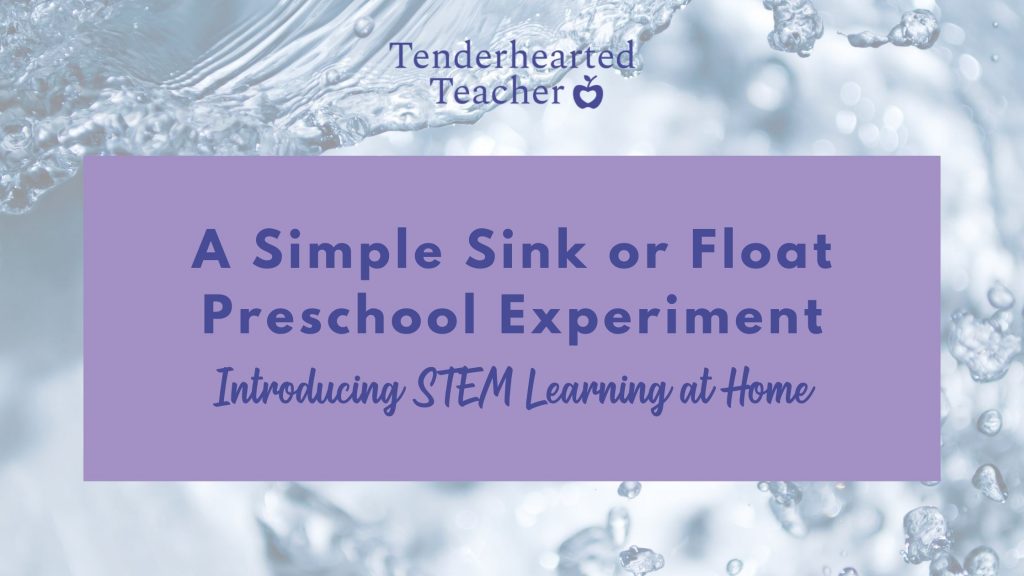
Please note: This post contains affiliate links. As an Amazon Associate I earn from qualifying purchases. Therefore, if you buy something through these links I will receive a small commission at no extra cost to you. Thank you for your support.
One of my absolute favorite things about being a preschool teacher is doing science experiments with my students. To an outsider, it might seem like these activities are just silly fun. But, in actuality, there is a whole lot of meaningful learning going on. In this blog post, I share a simple sink or float preschool experiment. Additionally, I provide a free printable set with several resources–including a STEM design challenge extension activity. (I’ve designed everything so it can all be easily done at home!)
First, A Little Background On STEM
Before I begin, I quickly want to discuss STEM. You’ve probably heard the acronym before (especially if you’ve been browsing online for entertaining activities for your little one.) But, what does it mean? STEM stands for science, technology, engineering, and math. Sometimes it’s referred to as STEAM. In that case, the ‘A’ stands for art. It’s been an important part of education in recent years. Additionally, there has been a push to integrate these subject areas into many aspects of teaching and learning.
According to Britannica.com, “STEM emphasizes collaboration, communication, research, problem- solving, critical thinking, and creativity, skills that students need to be successful in today’s world regardless of specific interests or career goals.”
So what does that mean at the preschool level? To put it simply, teachers and caregivers should provide young children with opportunities to explore these subjects to help prepare them for the future.
NAEYC states, ” Research shows that giving children exposure to quality, hands-on STEM learning opportunities is so important and familiarity with STEM concepts early on is a key predictor of children’s school success.”
Therefore, it’s fair to say that the best time to introduce these types of activities is in early childhood.
The Scientific Method
Believe it or not, scientific exploration isn’t a foreign concept to young children. In fact, they actually begin to engage in this process naturally starting in infancy. The Early Childhood Learning & Knowledge Center (ECLKC) does a great job explaining this:
“Infants and toddlers are natural scientists! They explore physical, natural, and social science anywhere and everywhere. They observe, are curious, and investigate to find out more about their world. They gather information as they solve problems. They communicate the results of their explorations through babbling, laughing, crying, physical gestures, facial expressions, and words.”
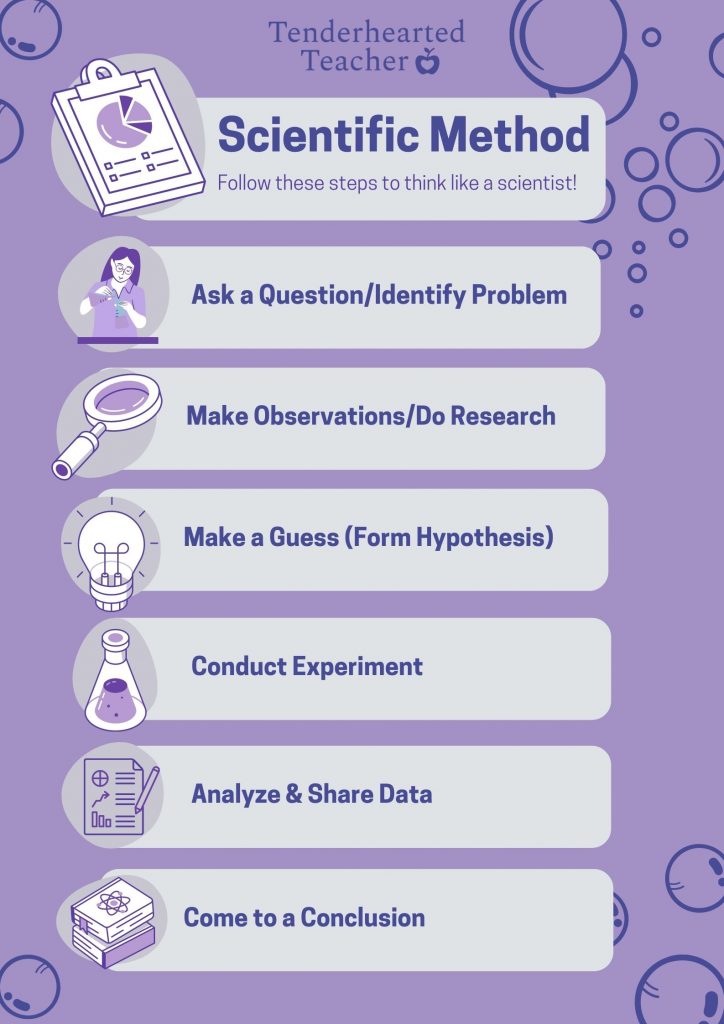
I give my preschoolers a more formal introduction to the Scientific Method at the beginning of each school year. This way they have more familiarity with this process to help better prepare them to reflect on their learning. Above all, I want them to understand that they are “little scientists” when they investigate and experiment.
As an aside, here’s a great video from FreeSchool that explains the Scientific Method in a kid-friendly way so you and your little one can watch it together!
Getting Started with STEM
It might seem overwhelming to come up with ideas for incorporating STEM at home. But, it doesn’t have to be. Let’s say my students are learning all about the life cycle of pumpkins at school. During that particular unit, I’d make sure to provide hands-on learning opportunities to teach literacy, math, and science skills using pumpkins. For instance, we might dissect pumpkins to explore what’s inside. We might also measure and weigh them. Finally, our classroom library would be stocked with books about pumpkins. All of this is arranged so that children can gain new knowledge or extend what they’ve previously learned.
With that said, reading books is an easy way to make STEM connections at home too. Think about it like this…books often have characters who are facing a problem that needs a solution. Therefore, they serve as a perfect jumping-off point for STEM learning because one of the first steps in the Scientific Method is identifying a problem. I should note that the books themselves don’t necessarily have to be science texts. Ultimately, they just have to have a theme or story that connects to the activity or experiment in some way.
Sink or Float Preschool Book Suggestions
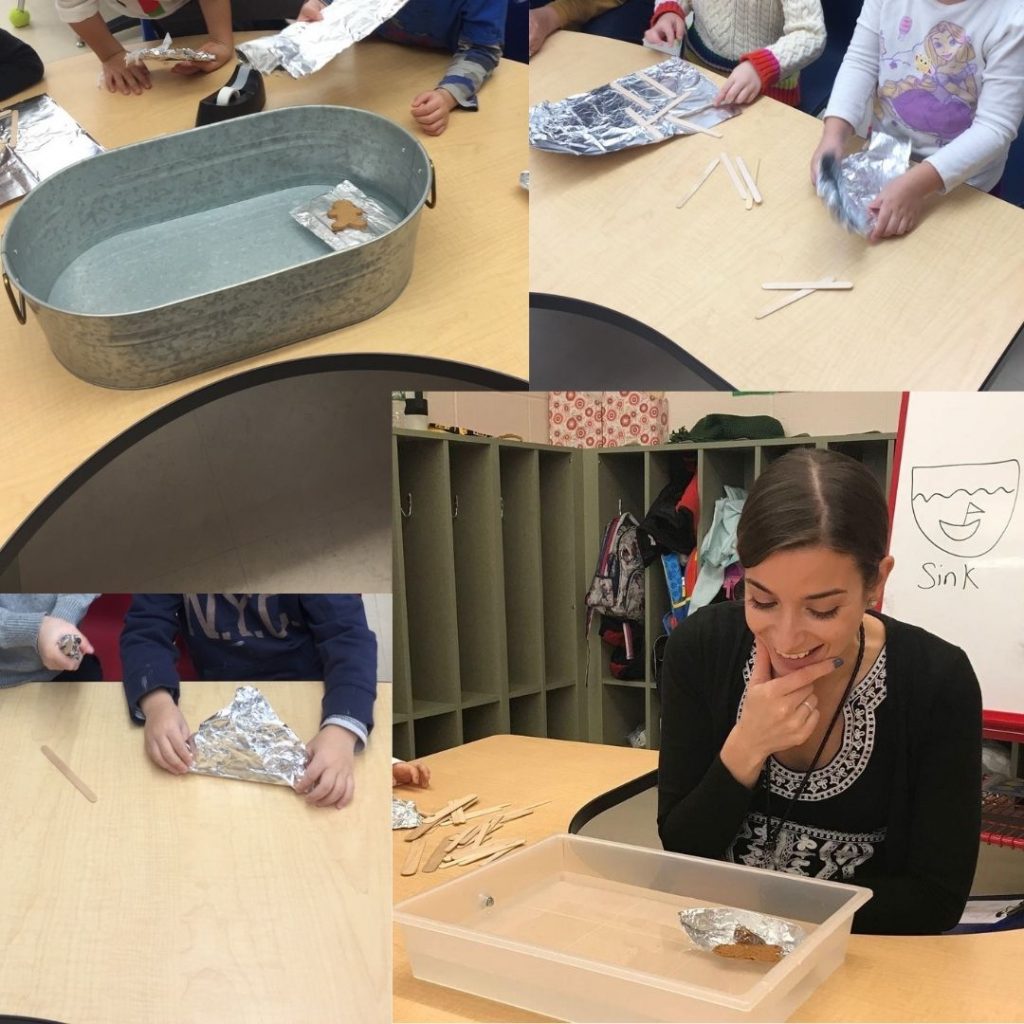
Going back to the idea of problem-solving, I typically read “The Gingerbread Boy” to my class before doing this sink-or-float activity. In this version of the classic tale, the gingerbread boy gets gobbled up by the fox as he attempts to cross the river. Therefore, I tasked my students with the challenge of designing a boat that would have protected him and gotten him to the other side safely.
Here are some age-appropriate books you can tie into the concept of sink or float.
- The Gingerbread Boy by Paul Galdone
- Who Sank the Boat? by Pamela Allen
- Mr. Gumpy’s Outing by John Burningham
Sink or Float Preschool Activity
Now that we have reviewed the Scientific Method and book options, it’s time to jump into the experiment. First things first, I’ve created a free printable set with additional resources to help you at home. Moreover, it provides everything you need to easily do this sink-or-float preschool activity with your little one!
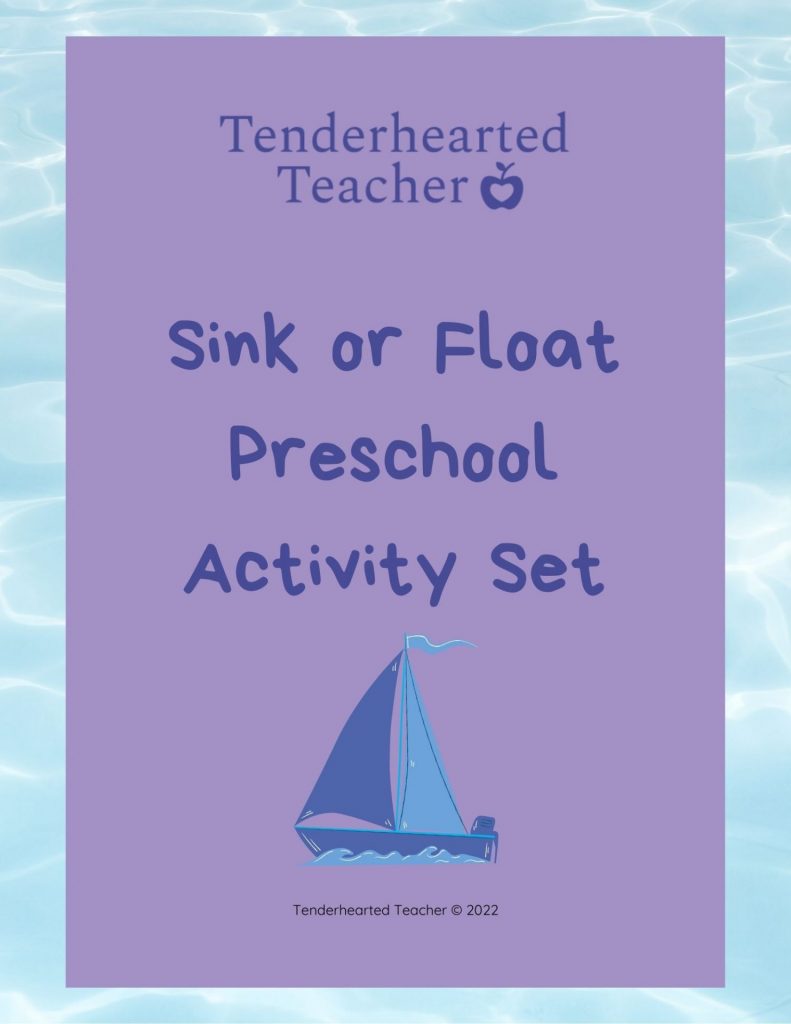
- Sink/Float Object Predictions Page (1 blank & 1 with suggestions)
- Vocabulary/Sorting Word Cards
- STEM Boat Challenge Directions
- STEM Boat Challenge Journal Page
What You’ll Need:
- free printable set
- reusable material such as tin foil and/or popsicle sticks
- various small objects like paperclips, bottle caps, marbles, rubber balls, rocks, etc.
- a large container filled with water
- small toy car or figure
Once you have your materials ready, then you can begin! Here are my suggested steps to follow:
Explore
First, have your child explore the concept of sink or float by placing a small toy or object in the water. Then let them make guesses on their prediction sheet about what will happen when various other objects are placed in the water.
Sort
Second, use your vocabulary word cards to make two columns: one for sink and one for float. Then have your child sort the objects based on what they observed during their exploration. They can place each object under the correct category/column.
Design
Third, extend their knowledge by having them build/engineer their own boat using the reusable material of their choice. Ask them to make a prediction about what the boat will do on their journal page. Then let them test it out in the water. Does it sink or float? If it floats try adding small toys or objects to see if their design can withhold additional weight. If it doesn’t float ask your child to problem-solve and reengineer their boat. This is also a great point to integrate technology. Your child can take photos or videos of this design and testing process.
Reflect
Fourth, once they are done experimenting have them reflect on their experience by filling out the rest of their journal page.
In Conclusion
At-home STEM learning doesn’t have to be daunting. As we’ve seen here, this entire activity can be done using items you already have at home. Furthermore, not only does it introduce science and engineering concepts in a fun way, but it also allows children to develop early math and critical thinking skills while engaging in play.
Now talk to me! Is this an activity you will try at home? Do you ever incorporate other STEM projects at home? If so, what are they? Share them in the comments below.
Additional Posts with At-Home Activities:
- Early Math With Blocks: How To Teach Your Preschooler Important Skills At Home
- How Music And Movement Promote Development In Preschoolers & How To Encourage This Growth At Home
- Free Activities For Preschoolers At Home
SAVE TO PINTEREST
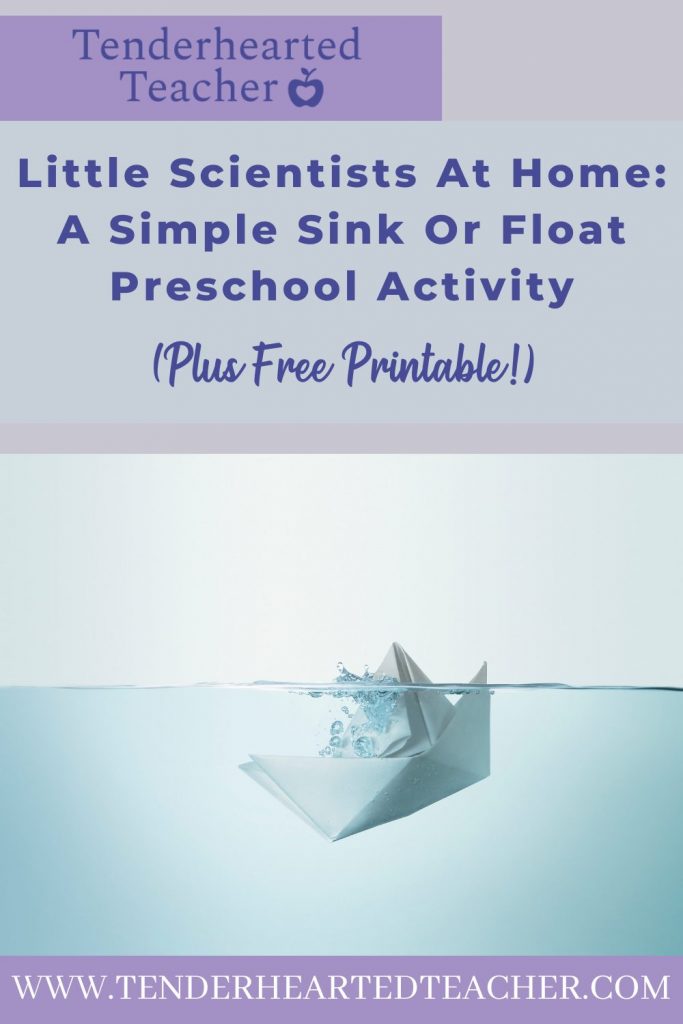
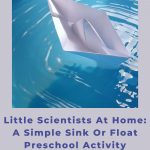
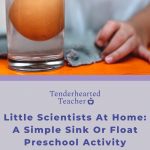
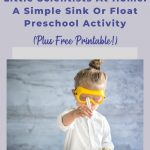
Great ideas to get children involved and enjoying science!
Thank you!
Hi Sally, my daughter is very curious about everything, and it’s always great to have new activities to do with her on the weekends. This sink or float activity looks totally doable and doesn’t need too much to get started. Thanks for sharing this!
Yes and you can use items you already have at home so it’s even easier!
Amazing post. Very good idea for STEM activity
Thank you!
My kids love to do sink or float of anything that they can see around the house. Sometimes it’s messy but I know they can learn. Story telling can be a great idea for learning too.
It’s even something you can do in the bathtub so there’s less clean-up!
This sounds so fun and easy! My son loves to do experiments, so I will have to try this with him next. Thanks for sharing!
So easy to do! You can even do it during bath time!
Great idea with the boat. I’m definitely going to try this with my 4 year old daughter.
My preschool students have such a fun time with this. Please let me know how your daughter likes it.
My preschooler would LOVE this experiment! It’s so fun for them to try it out.
Please let me know how it goes!
Love this! Such a great post!
Thanks so much for your comment.
My daughter loves sink and float! We set up a little table with a water basin for her to explore independently. She puts objects in the water and sorts the objects by if they sink or float. It’s so great for little ones! I also found this really cool idea to play sink and float with fruits, to see which ones sink and float. We learned that oranges with their peel still on float, but with the peel off, they sink.
What a great idea! We’ve got to try that idea with the fruit! Such a fun extension activity!
This is such a fun idea and I am going to try this at home with my son for sure! 🙂
Wonderful! Please let me know how it goes! 🙂
Very cool! Children are natural scientists and I love writing for this very curious age group. In fact, I wrote a book on this very topic: Sink or Float 🙂
Thank you for your comment, Vijaya. I certainly agree. They are so very curious. That makes them even more fun to work with!